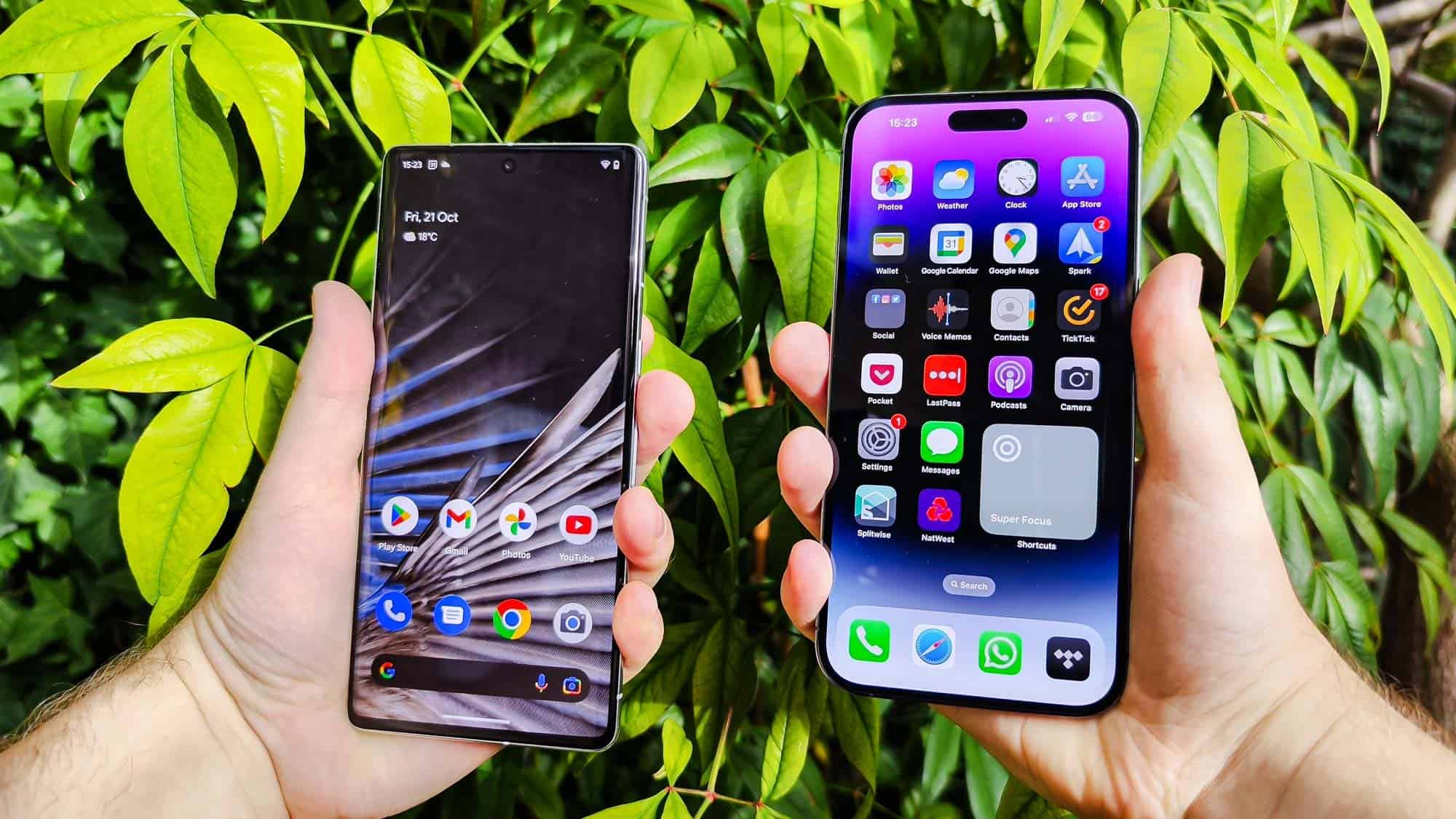After two years of decline, the global smartphone market is exhibiting signs of a much-needed rebound in 2024. Industry analysts like Canalys and Counterpoint Research predict a growth of 3-4%, fueled by several key trends. This article delves into the current state of the smartphone market, exploring the challenges and opportunities for major vendors like Apple, Samsung, Xiaomi, Oppo, and Vivo. We’ll also analyze the impact of global economic fluctuations and examine strategies these companies are adopting to navigate this dynamic landscape.
Smartphone Market Trends in 2024: Navigating a Rebounding Landscape
Market Rebound: A Tale of Two Segments
The growth is primarily driven by emerging markets like India, Africa, and the Middle East. These regions boast a burgeoning young population with a rising disposable income, making them fertile ground for budget and mid-range smartphones. Counterpoint Research predicts an 11% surge in the budget segment, indicating a strong demand for affordable devices with decent features. This trend is a boon for vendors like Xiaomi, Oppo, and Vivo, who have established a strong foothold in these markets with their value-driven offerings.
However, the premium segment (phones priced between $600 and $799) is also expected to witness a significant jump of 17%. This suggests a renewed interest in high-end features like advanced camera systems, powerful processors, and innovative foldable displays. Apple and Samsung, the traditional leaders in this segment, stand to benefit from this trend.
Challenges and Opportunities for Major Players
While the market is poised for a rebound, several challenges remain. The global economic situation, marked by inflation and rising interest rates, could dampen consumer spending power, particularly in developed markets.
-
Apple: The iPhone giant faces the challenge of maintaining its premium pricing strategy in an inflation-sensitive environment. However, Apple’s loyal customer base and focus on innovation with features like the rumored under-display Face ID and powerful A-series chips could help them retain their market share.
-
Samsung: Samsung, with its diverse product portfolio catering to all segments, is well-positioned to capitalize on the growth across both budget and premium segments. However, they need to address competition from Chinese brands in the mid-range segment while maintaining their edge in foldable phone technology.
-
Xiaomi, Oppo, and Vivo (BBK Electronics): These Chinese giants need to navigate rising component costs and geopolitical tensions that could disrupt their supply chains. However, their aggressive marketing strategies, focus on camera innovation, and expansion into premium segments present significant growth opportunities.
The Generative AI Factor
A novel trend influencing the smartphone market is the integration of generative AI (artificial intelligence) capabilities. Features like AI-powered photo editing, real-time language translation, and personalized content creation are becoming increasingly prevalent. This integration could incentivize consumers to upgrade to new devices, particularly in the premium segment, where cutting-edge processors are crucial for running advanced AI applications.
The Global Uncertainty and Strategies for Growth
The smartphone market operates in a globalized environment, making it susceptible to economic and political fluctuations. To navigate this uncertainty, vendors are adopting various strategies:
-
Diversification: Expanding product portfolios across price segments allows vendors to cater to a wider customer base. This is particularly beneficial for brands like Samsung and Xiaomi who enjoy brand recognition across the spectrum.
-
Focus on Innovation: Investing in research and development to bring unique features and user experiences is crucial to stand out in a crowded market. Foldable displays, advanced camera systems, and longer battery life are some areas of focus for leading players.
-
Boosting Online Presence: The pandemic accelerated the shift towards online sales. Strengthening e-commerce platforms and offering online-exclusive deals can attract price-conscious consumers.
-
Sustainability Initiatives: Growing environmental concerns are pushing consumers towards brands with sustainable practices. Implementing eco-friendly materials and promoting device longevity through software updates can enhance brand image.

The Road Ahead
The smartphone market in 2024 presents both challenges and opportunities. While emerging markets drive the growth, economic uncertainties and rising component costs remain hurdles. The success of major vendors will hinge on their ability to adapt to these dynamics. By focusing on strategic diversification, continuous innovation, and user-centric experiences, smartphone players can carve a path to sustainable growth in this ever-evolving market.
Looking Beyond 2024
The long-term outlook for the smartphone market remains positive. Technological advancements like 5G connectivity, advancements in AR/VR, and the integration of AI are poised to transform the user experience. Emerging markets will continue to be a major growth driver, and the focus on affordable yet feature-rich devices will intensify. The smartphone will remain an indispensable tool for communication, entertainment, and productivity, ensuring its continued relevance in our increasingly digital world.
Diving Deeper: Segment-Specific Trends and Emerging Technologies
The smartphone market in 2024 is a story of contrasting narratives across different segments. Here’s a closer look at some key trends shaping each segment:
-
Budget Segment: Affordability remains paramount. Brands like Xiaomi, Oppo, and Vivo will leverage economies of scale and efficient manufacturing processes to offer feature-packed devices at attractive price points. Focus on larger displays, longer battery life, and decent camera systems will be crucial to attract budget-conscious consumers.
-
Mid-Range Segment: This segment offers the sweet spot between affordability and features. Competition is fierce, with brands vying for market share through innovative camera features, powerful processors that can handle casual gaming, and sleek designs. The integration of 5G technology at accessible price points will be a key differentiator in this segment.
-
Premium Segment: Foldable phones are expected to gain further traction in 2024. Samsung, with its established lead in this technology, will face increasing competition from brands like Oppo and Vivo venturing into the foldable space. Under-display camera technology and advancements in biometrics like in-display fingerprint scanners and facial recognition will be key selling points for premium devices. Additionally, enhanced camera capabilities, particularly zoom technology and computational photography features, will remain a major focus area for brands like Apple and Samsung.
Emerging Technologies on the Horizon
The smartphone landscape is constantly evolving, with new technologies waiting in the wings to disrupt the market. Here are some trends to watch out for:
Gizchina News of the week
-
Augmented Reality (AR) and Virtual Reality (VR): Integration of AR and VR capabilities into smartphones has the potential to revolutionize user experiences. Gaming, education, and even social interaction could be transformed by these immersive technologies. However, challenges related to processing power, battery life, and the need for specialized accessories remain.
-
Brain-Computer Interfaces (BCI): While still in its nascent stages, BCI technology has the potential to enable a more intuitive way of interacting with smartphones. Imagine controlling your phone with your thoughts – selecting apps, scrolling through menus, or even typing messages could become a reality in the future.
-
Flexible Displays: Beyond the current foldable designs, the future might hold displays that are truly flexible and rollable. This could lead to innovative form factors and enhanced user experiences.
Sustainability Concerns and Regulations
Sustainability is becoming a pressing concern in the smartphone industry. The environmental impact of manufacturing, the use of rare earth materials, and the issue of e-waste are prompting stricter regulations and consumer awareness. Here’s how the market is responding:
-
Eco-Friendly Materials: Brands are exploring the use of recycled materials in phone construction and packaging.
-
Software Updates and Longer Lifespans: Extending software support and providing security updates for older devices encourages users to hold onto their phones for longer, reducing the burden of electronic waste.
-
Right to Repair Movement: Consumers are demanding the right to repair their own devices, increasing pressure on manufacturers to provide readily available spare parts and repair manuals.
The Future of the Smartphone Ecosystem
The smartphone ecosystem extends beyond the devices themselves. App developers, content creators, and mobile network operators play a crucial role in shaping the user experience. Here are some anticipated developments in this domain:
-
The Rise of Super Apps: Super apps, prevalent in markets like China, offer a multitude of services within a single platform. Messaging, payments, social media, and even transportation can be accessed through a single app. This trend could gain traction in other regions as well.
-
Subscription Monetization Models: The shift from one-time app purchases to subscription-based models for premium features and ad-free experiences is likely to continue.
-
Focus on Data Security and Privacy: With increasing awareness around data privacy, regulations like GDPR and CCPA are forcing stricter data security practices. Transparency around data collection and user control over their information will be key differentiators for app developers and service providers.

The Regional Nuances: A Look at Smartphone Market Trends by Geography
The global smartphone market is a tapestry woven from diverse regional trends. Here’s a glimpse into the specific dynamics playing out in key geographical areas:
-
China: While still a major smartphone market, China is experiencing a slowdown in growth. Saturation in the high-end segment and economic uncertainties are leading to a shift towards affordable phone upgrades and longer replacement cycles. Domestic brands like Xiaomi, Oppo, and Vivo are well-positioned to capitalize on this trend.
-
India: India is the world’s second-largest smartphone market and is expected to be a key driver of growth in 2024. With a young population and rising disposable income, the demand for budget and mid-range smartphones is surging. Chinese brands are dominant players, but Indian manufacturers like Micromax and Lava are also making a comeback.
-
North America: The North American market is a mature one, with replacement cycles tending to be longer. However, the premium segment remains strong, with Apple and Samsung dominating the space. Foldable phones and innovative camera features are likely to be key drivers of upgrades in this region.
-
Europe: The European market is similar to North America in terms of maturity. However, there’s a growing presence of Chinese brands like Xiaomi and Huawei, particularly in the mid-range segment. European regulations on data privacy and environmental sustainability are also shaping market trends in this region.
-
Africa and Latin America: These regions are witnessing rapid smartphone adoption, driven by increasing internet penetration and affordable data plans. Budget and mid-range devices with features like dual SIM support and long battery life are in high demand. Emerging regional brands like Itel and Tecno are gaining traction in these markets.
The Rise of “Glocal” Brands
The smartphone market is witnessing the rise of “glocal” brands – companies with a global outlook but a strong regional presence. These brands cater to the specific needs and preferences of local consumers. For instance, Indian brands like Micromax and Lava are focusing on features like long battery life and support for multiple regional languages. Similarly, African brands like Itel and Tecno are known for their affordability and durability. Making them popular choices in these developing economies.
The Second-Hand Market Boom
The growing focus on sustainability and affordability is propelling the second-hand smartphone market. Refurbished devices from reputable vendors provide consumers with access to quality smartphones at significantly lower prices. This trend is particularly prevalent in developed markets and is expected to gain further traction globally.
The Gaming Revolution
Also, mobile gaming is a major driver of smartphone innovation. Powerful processors, high refresh rate displays, and advanced cooling systems are becoming increasingly important features for smartphones targeting gamers. Collaboration between phone manufacturers and game developers to optimize performance and user experience is crucial in this segment.
The Future of Retail: Online vs. Offline
While online sales have been on the rise in recent years, physical retail stores will continue to play a vital role in the smartphone market. The ability to touch and feel devices, receive personalized recommendations from sales associates, and access instant post-purchase support remains important for many consumers. The future lies in a successful omnichannel strategy, where online and offline channels complement each other to create a seamless customer experience.
Conclusion
So, the smartphone market in 2024 is a dynamic landscape brimming with opportunities and challenges. Emerging markets are propelling growth, while technological advancements offer exciting possibilities for the future. Major vendors must navigate economic uncertainties, adapt to evolving consumer preferences, and embrace sustainable practices. By fostering innovation, prioritizing user experience, and addressing environmental concerns, the smartphone industry can ensure its continued relevance and growth in the years to come.
Via: gizchina.com









